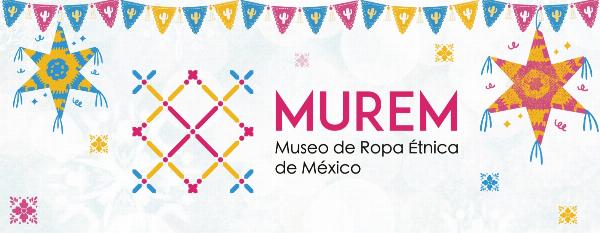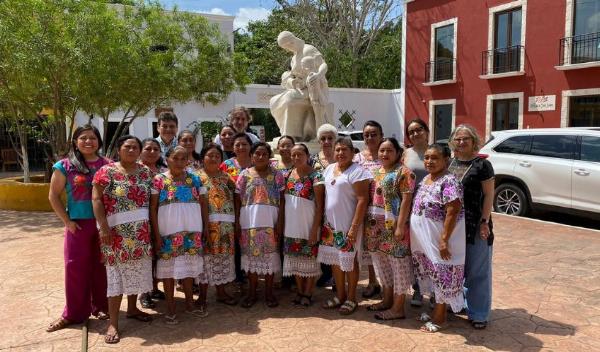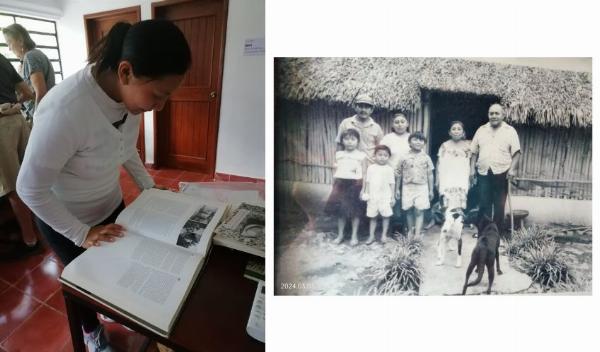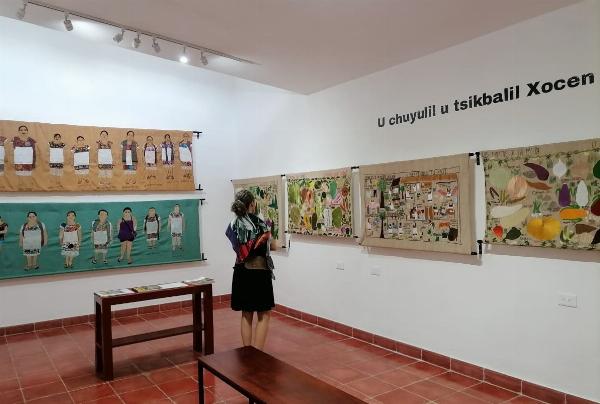The authentic Christmas celebrations in Yucatán
 Publicado: 22-12-2023
- Tempo de leitura: 2 minuto
Publicado: 22-12-2023
- Tempo de leitura: 2 minutoThe December season in Yucatan is a time full of color and traditions that reflect the rich cultural heritage of the region. For this reason, MUREM represents these customs with a display of traditional decorations, preserving their use in contrast to global iconography, omitting the Christmas tree and Santa Claus.
The Christmas and religious celebrations around Mexico begin on December 12, the date on which you can see and hear the Antorchistas Guadalupanos, who have been running from town to town holding a torch as a promise to the Virgin of Guadalupe, filling the streets followed by the ornate cars that have accompanied them on their journeys, with sirens and pyrotechnics in honor of the Virgin on her birthday, and devoutly manifesting their Catholic faith.
The Rama Navideña is a tradition that runs from December 1 to 11, in which a branch from a palm tree (huano) or murraya (Yucatecan lemon tree) is decorated with Christmas balls, balloons or other decorative elements and an image of the Virgin of Guadalupe. This practice reflects the abundance and generosity characteristic of the season, as children go from house to house singing a particular Christmas carol to request money.
One of the most common decorative and dynamic elements during the celebration of the Christmas Posadas is the piñata. Historically, the piñata has Asian origins, but during Mesoamerican colonization, it was used as a method of evangelization and teaching Christian doctrines.
Christmas customs in Mexico are full of regional elements, which have remained rooted for centuries and have bloomed like the endemic Poinsettia flower in December. This decoration has become popular around the world. Pre-Hispanic mythology says that the spirit of the deceased fed on the nectar of this plant. Likewise, the scarlet color represents the blood of the sacrifices offered to the sun to renew its strength during the winter season.
Before the popularization of the iconic Santa Claus in the collective imagination, Mexican children looked forward to receiving a visit from the baby Jesus, who brought toys in return for his good behavior. The toys were usually traditional pieces. In Yucatán, it was common to receive handmade toys, such as rag, porcelain or clay dolls, as well as tops, ball bearings, slingshots and even wooden cars, appreciating simplicity and creativity in the midst of material abundance.
To close out the year, one of the most distinctive practices of the region is the burning of Old Year Dolls. This practice releases the setbacks of the past year to welcome new opportunities and experiences. The creation of the doll is a collaborative process that involves family creativity in the making of the paper mache figure wearing old clothes and stuffed with newspaper and an arsenal of fireworks to be ignited at midnight on 31 December.
The holiday season in Yucatán is a time in which traditions are intertwined with the cultural essence of the region and global customs. Each practice reflects core values of unity, generosity, and faith.
MUREMShare it | | Whatsapp



